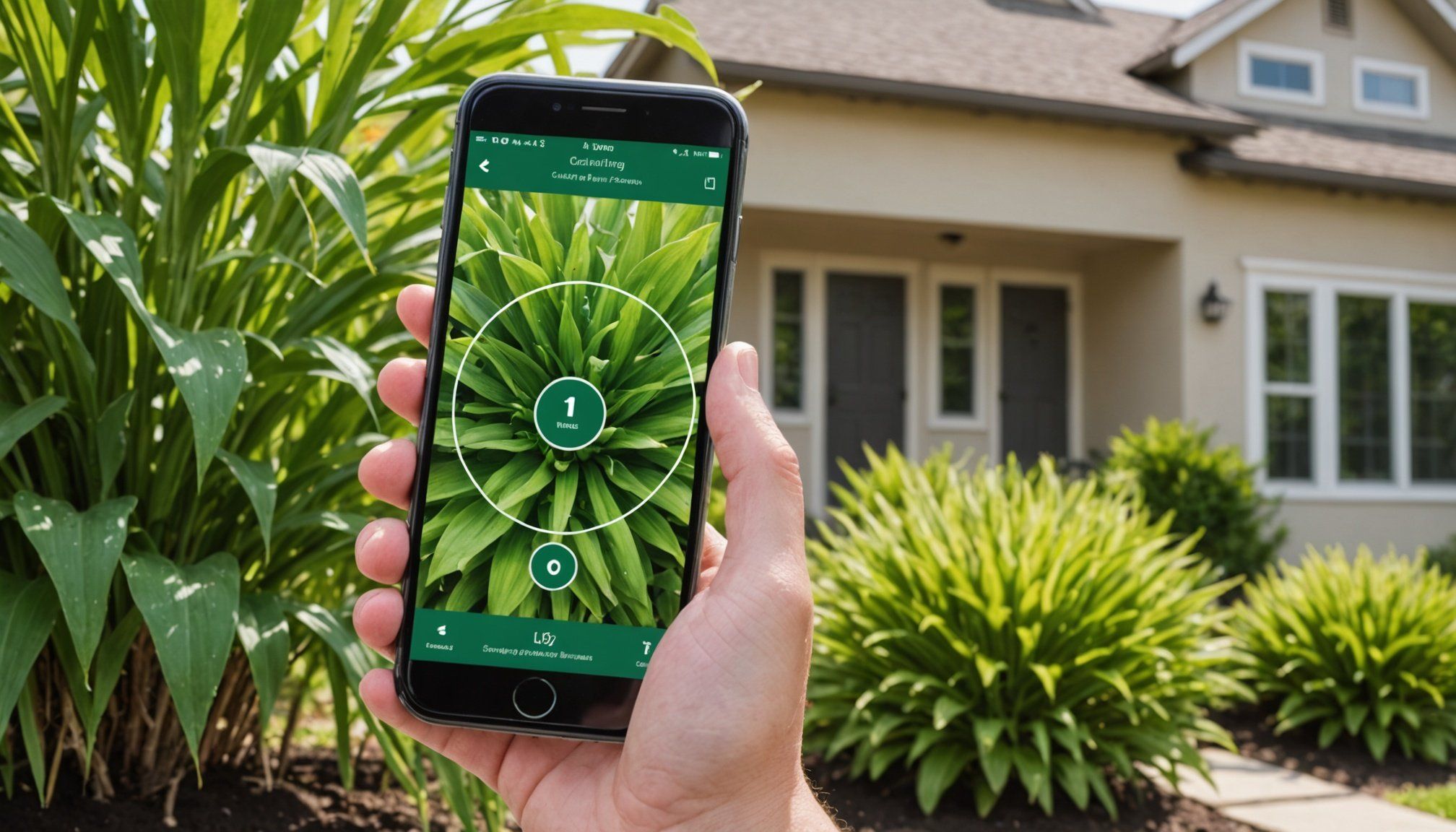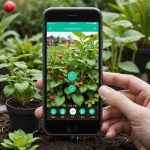Unlocking Smart Watering Solutions: The Comprehensive Handbook to Smartphone-Driven Home Irrigation Systems
In the era of smart home automation, managing your home’s irrigation system has never been more efficient, eco-friendly, and convenient. Smartphone-driven home irrigation systems are revolutionizing the way we care for our lawns and gardens, ensuring optimal water use while saving time, energy, and money. Here’s a detailed guide to help you navigate the world of smart irrigation.
Understanding Smart Irrigation Systems
Smart irrigation systems are designed to optimize water use by leveraging advanced technologies such as real-time weather data, soil moisture sensors, and smartphone app control. These systems are not just about watering your lawn; they are about doing it intelligently.
Also read : Transform Your Smartphone into a Cutting-Edge Garden Guardian: An In-Depth Guide to Smart Gardening
How Smart Irrigation Works
Smart irrigation controllers connect to the internet and use real-time weather data to adjust watering schedules. For instance, the Rain Bird LNK2 WiFi Module allows you to manage your watering from anywhere in the world using your mobile device. It integrates with popular smart home devices like Google Assistant and Amazon Alexa, ensuring seamless control and automation[1].
Key Features of Smart Irrigation Systems
- Real-Time Weather Data: Systems like the Rachio 3 and Orbit B-Hyve use extensive weather forecast data to make fine-tuned watering adjustments, preventing overwatering during rainy days or underwatering during dry spells[4].
- Soil Moisture Sensors: These sensors monitor the soil’s moisture levels, adjusting the watering schedules accordingly. The Aiper IrriSense Smart Irrigation System, for example, uses real-time soil conditions to ensure efficient irrigation[2].
- Smartphone App Control: Most smart irrigation systems come with user-friendly apps that allow you to control and monitor your irrigation system remotely. The DIG 410BT Bluetooth Battery Operated Controller can be controlled via the DIG BTT app on your smartphone or tablet[3].
Choosing the Right Smart Irrigation Controller
With numerous options available, selecting the right smart irrigation controller can be overwhelming. Here are some key factors to consider:
Have you seen this : Maximize Your Smartphone for Instant Traffic Notifications: Receive Real-Time Updates Like a Pro!
Compatibility and Connectivity
Ensure the controller is compatible with your existing irrigation system and your home’s WiFi network. The Rain Bird LNK2 WiFi Module, for instance, is compatible with Rain Bird ESP-TM2, ESP-ME3, and ESP-RZXe controllers manufactured after November 2, 2016[1].
Ease of Installation and Use
Look for controllers with easy installation processes. The Aiper IrriSense Smart Irrigation System boasts a three-minute installation time with no underground piping required[2].
Weather Responsiveness
A good smart irrigation controller should be highly responsive to local weather forecasts. The Rachio 3, for example, is praised for its excellent weather responsiveness, making it a top choice in Consumer Reports’ tests[4].
Comparative Analysis of Top Smart Irrigation Controllers
Here’s a comparative table of some of the top smart irrigation controllers on the market:
| Controller | Compatibility | Weather Responsiveness | Smart Home Integration | Additional Features |
|---|---|---|---|---|
| Rain Bird LNK2 WiFi Module | ESP-TM2, ESP-ME3, ESP-RZXe | Good | Google Assistant, Amazon Alexa | Seasonal Adjust, Rain Delay, Tailored Alerts[1] |
| Rachio 3 | Up to 8 zones | Excellent | Amazon Alexa, Google Home/Assistant, Samsung SmartThings | Manual controls, backup battery option (separate purchase)[4] |
| Orbit B-Hyve XR | Up to 8 zones | Good | Amazon Alexa, Google Home/Assistant | Weatherproof casing, LED screen, manual controls[5] |
| Aiper IrriSense | Customizable mapping | Excellent | Aiper App | Re-Spray Algorithm, Plant Cooling Mode, fertilizer and pesticide dispensing[2] |
| DIG 410BT | Bluetooth connectivity | Good | DIG BTT App | Waterproof design, rain delay option, password protection[3] |
Practical Insights and Actionable Advice
Saving Water and Money
Smart irrigation systems are designed to save water and money. For example, the Rain Bird LNK2 WiFi Module can help you save up to 50% in water by adjusting system run times based on local weather data[1].
Enhancing Plant Health
Using moisture sensors and real-time weather data, smart irrigation systems ensure your plants receive the right amount of water. The Aiper IrriSense Smart Irrigation System’s Re-Spray Algorithm ensures 99% coverage, targeting under-watered sections for even growth[2].
Integrating with Smart Home Devices
Many smart irrigation controllers integrate seamlessly with other smart home devices. The Orbit B-Hyve XR, for instance, works with Google Assistant and Amazon Alexa, allowing for voice control and home automation[5].
Advanced Features and Innovations
Customizable Mapping and Spray Points
The Aiper IrriSense Smart Irrigation System allows users to set specific spray points and reduce water usage by up to 50%. This customizable mapping function ensures that water is used efficiently and effectively[2].
Drip Irrigation and Fertilizer/Pesticide Dispensing
Some systems, like the Aiper IrriSense, go beyond just watering. They can store and dispense fertilizers and pesticides at the push of a button, enhancing the overall ecosystem of your lawn[2].
Solar Panel Compatibility
For those looking to go green, some smart irrigation controllers can be powered by solar panels. This not only reduces energy costs but also makes the system more sustainable.
Real-World Examples and Anecdotes
A Homeowner’s Experience with Smart Irrigation
“I was amazed by how much water I was wasting with my old irrigation system. After installing the Rain Bird LNK2 WiFi Module, I was able to monitor and adjust my watering schedules remotely. My water bill dropped significantly, and my lawn looks healthier than ever,” says John, a homeowner in California.
Commercial Use of Smart Irrigation
Commercial properties are also benefiting from smart irrigation. “We installed the Rachio 3 across our golf course, and it has been a game-changer. The system’s ability to adjust watering based on real-time weather data has saved us thousands of dollars in water costs,” explains Mark, the groundskeeper at a local golf course.
Tips for Effective Smart Irrigation Management
Regularly Update Your Watering Schedules
Use the app to regularly update your watering schedules based on changing weather conditions and soil moisture levels.
Use Moisture Sensors
Moisture sensors provide real-time data on soil conditions, ensuring that your plants receive the right amount of water.
Integrate with Other Smart Home Devices
Integrating your smart irrigation controller with other smart home devices can enhance home automation and make managing your home easier.
Monitor Water Usage
Regularly monitor your water usage through the app to identify any inefficiencies and make necessary adjustments.
Smartphone-driven home irrigation systems are a significant step forward in water management and home automation. By leveraging real-time weather data, soil moisture sensors, and smartphone app control, these systems ensure your lawn receives only the water it needs, saving you time, energy, and money.
As Larry Ciufo, CR’s test engineer for sprinkler controllers, notes, “The ability of these smart sprinkler controllers to make fine-tuned watering adjustments greatly depends on the robustness of their weather data. You’re going to want a controller that uses a lot of forecast data to make its adjustments.”[4]
Embracing smart irrigation is not just about adopting new technology; it’s about living a smarter, more sustainable life. Whether you’re a homeowner looking to save on your water bill or a commercial property manager aiming to optimize water use, smart irrigation systems offer a solution that is both efficient and eco-friendly. So, why not unlock the full potential of smart watering solutions and transform your home into a smart, water-conscious haven?











